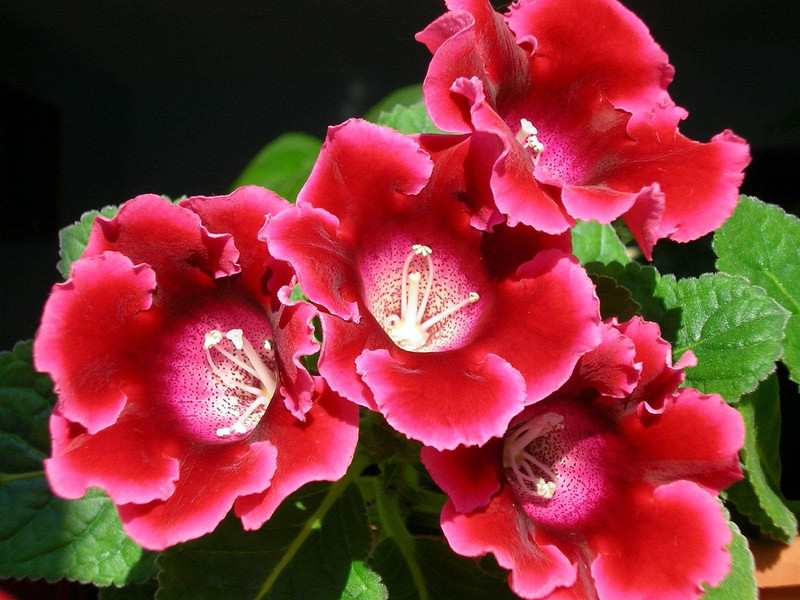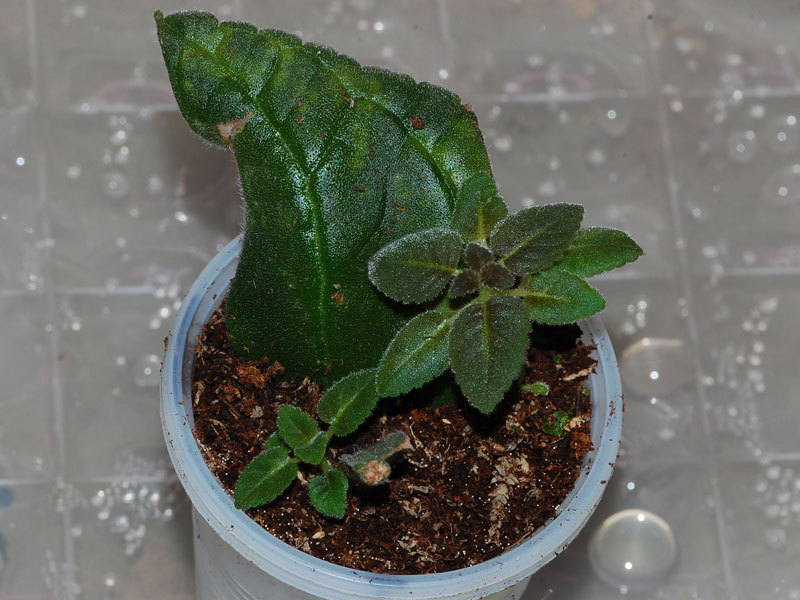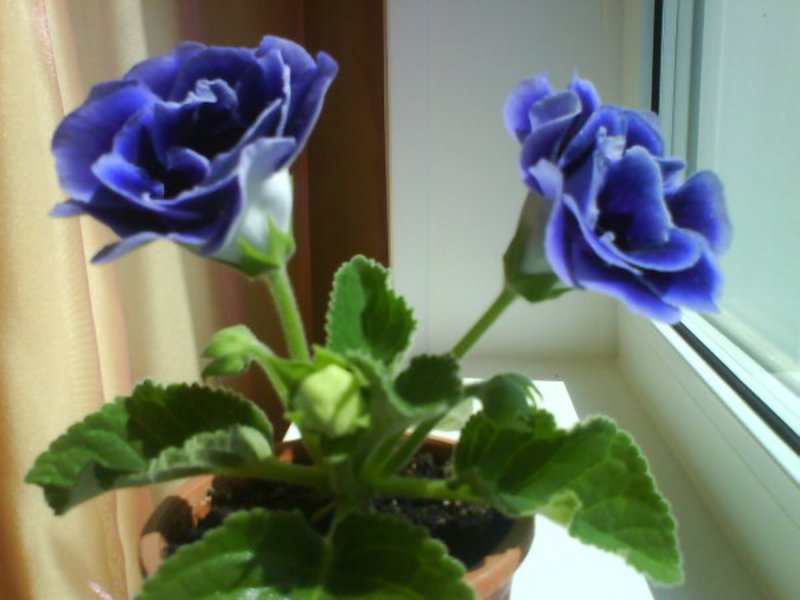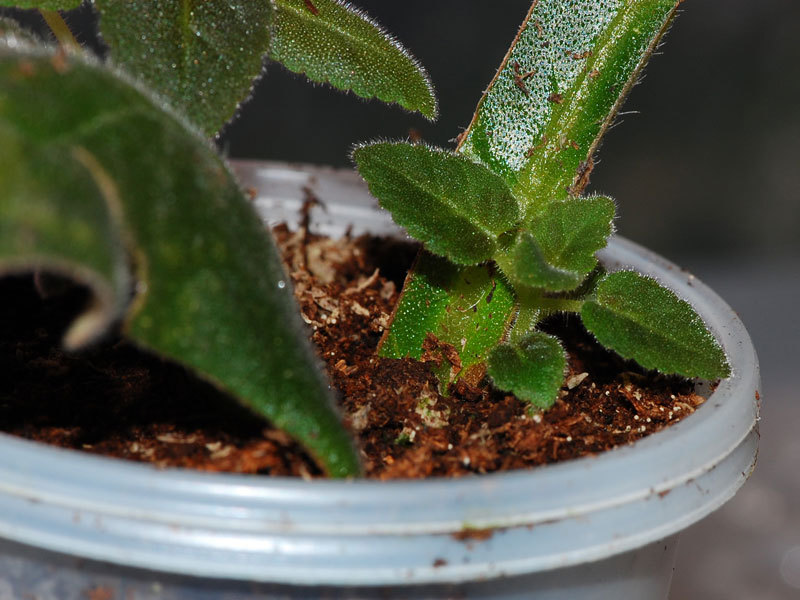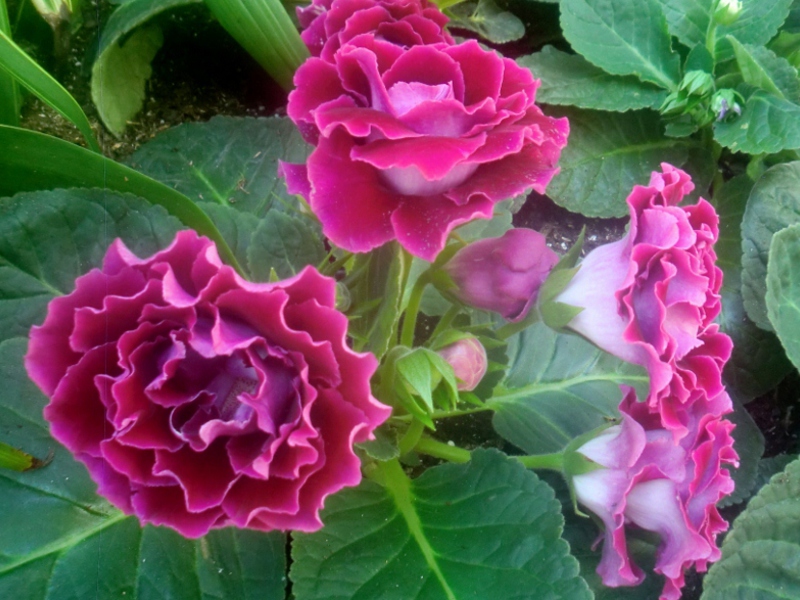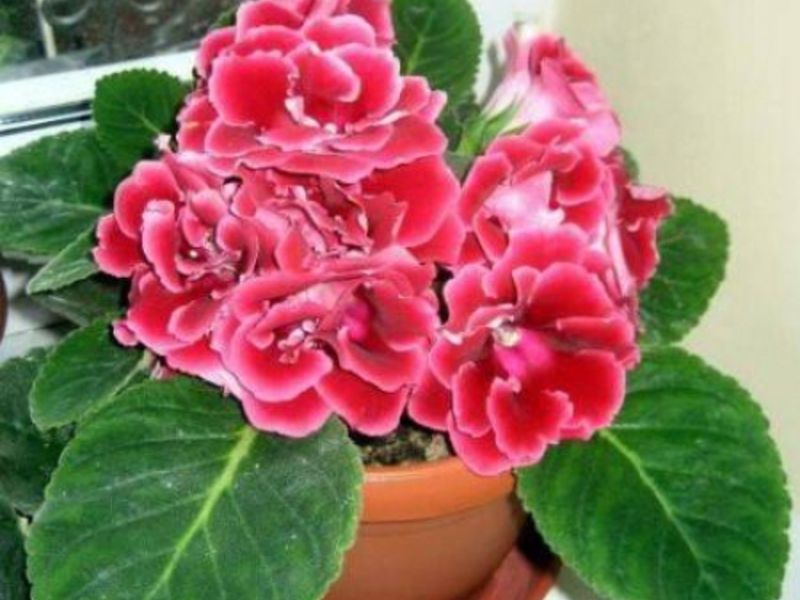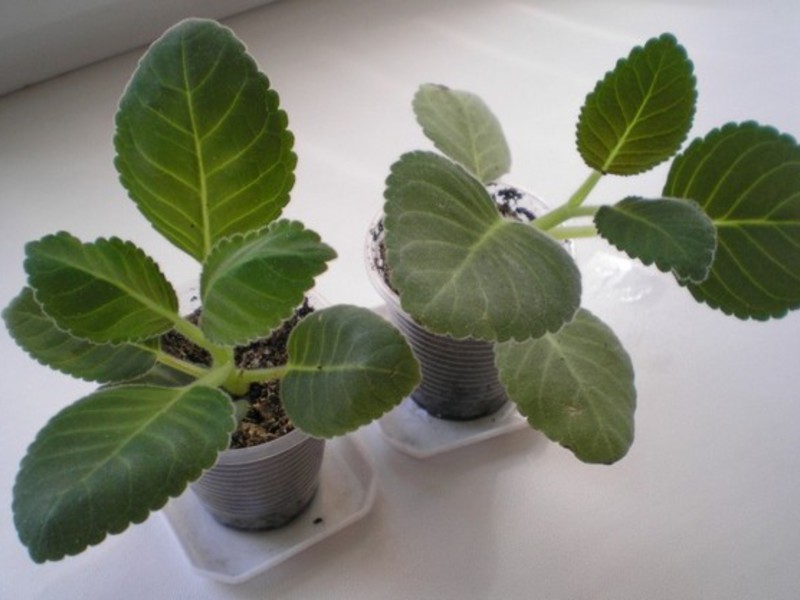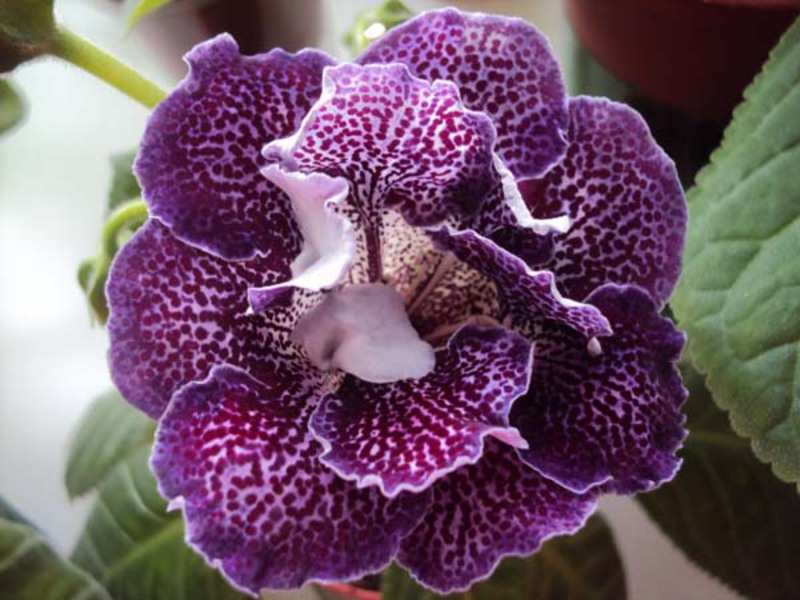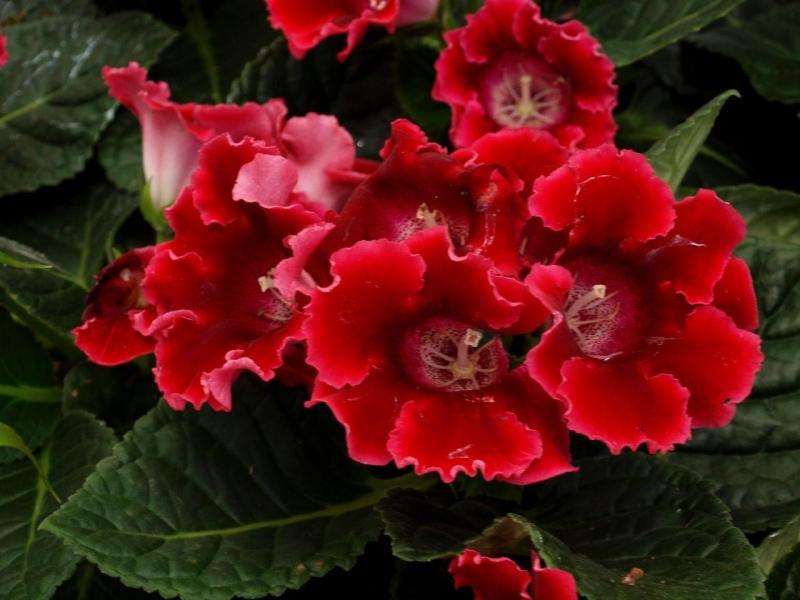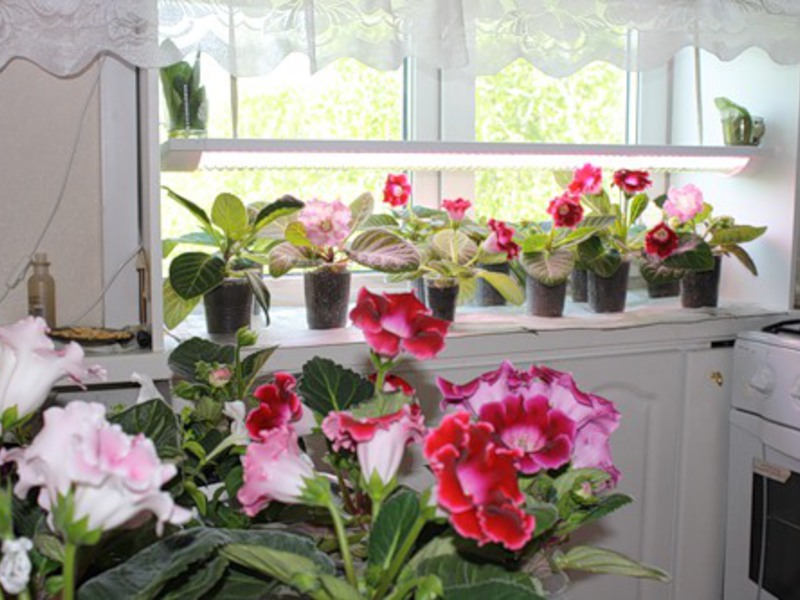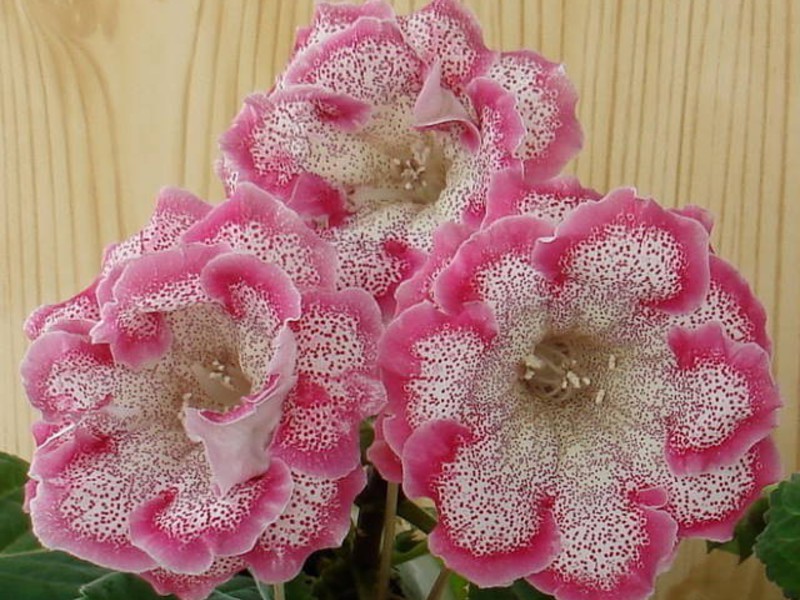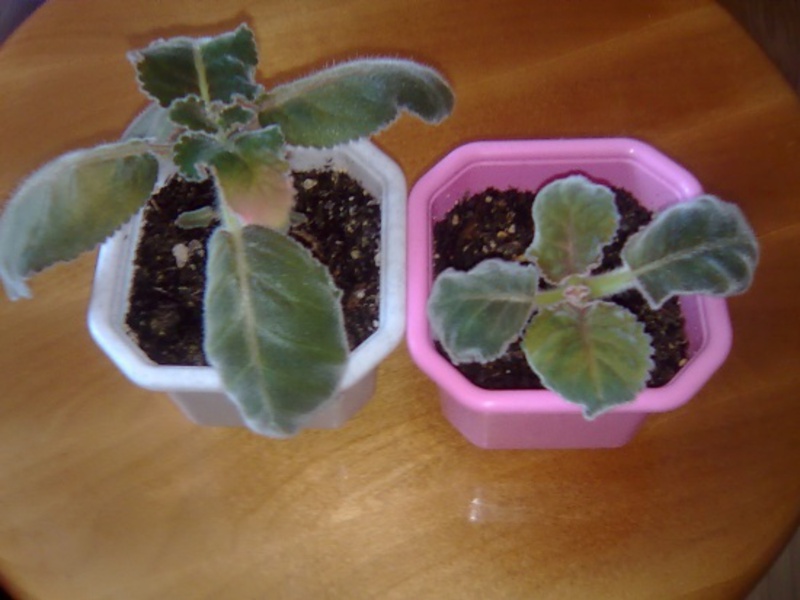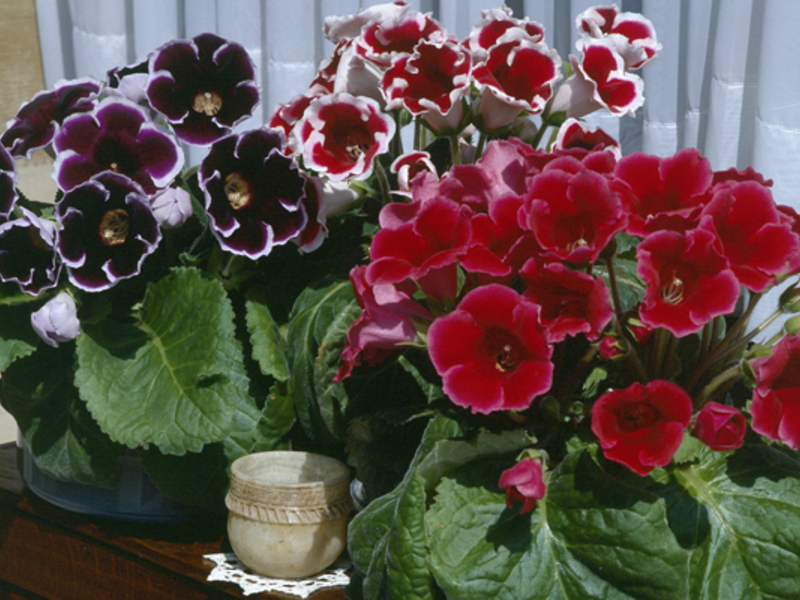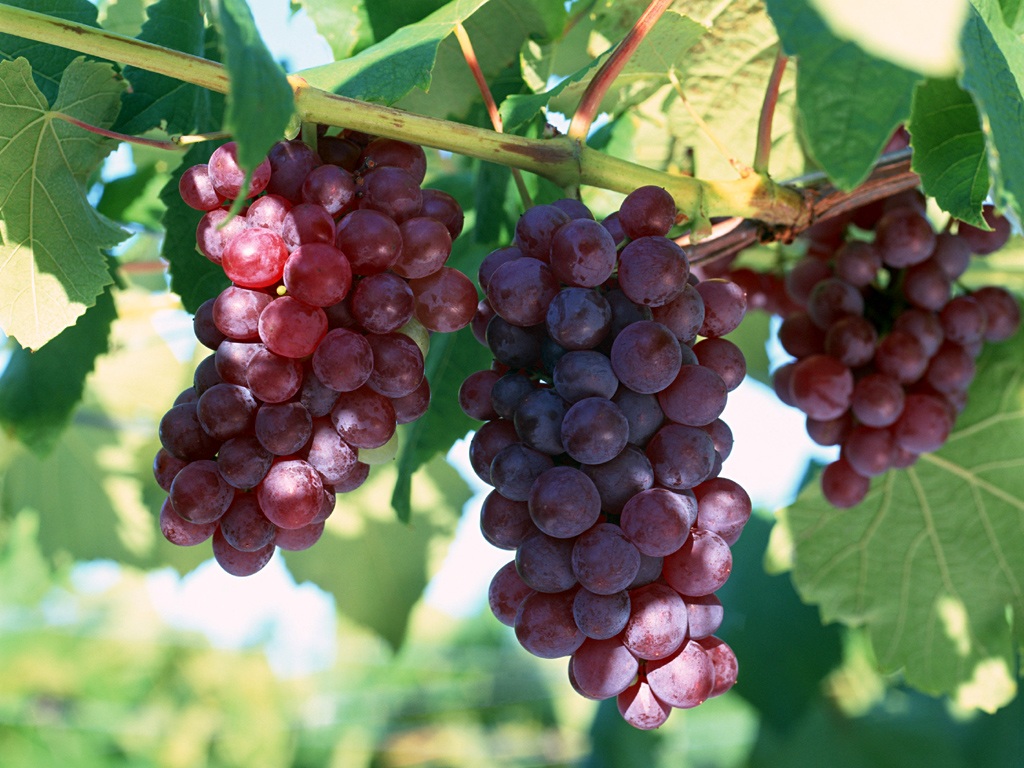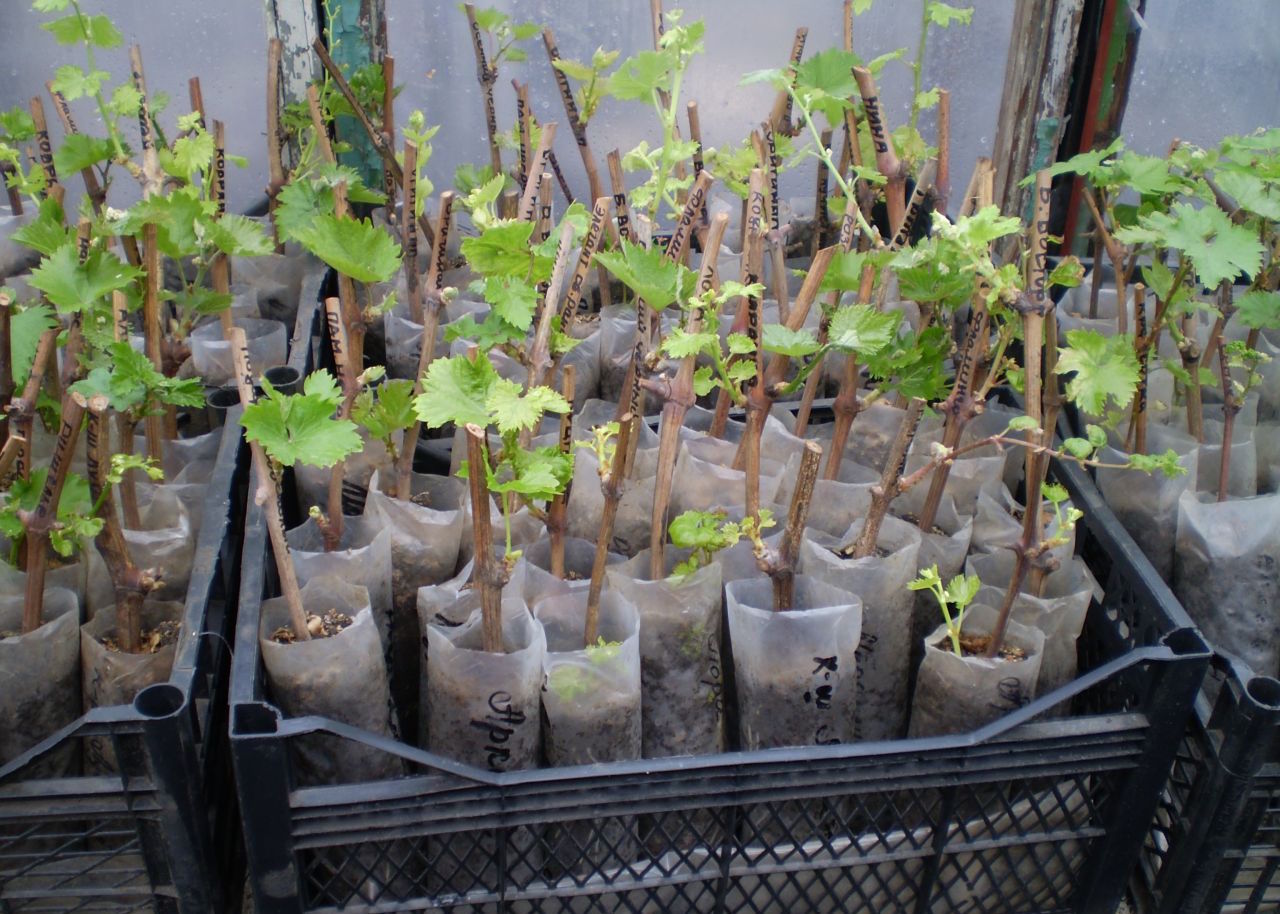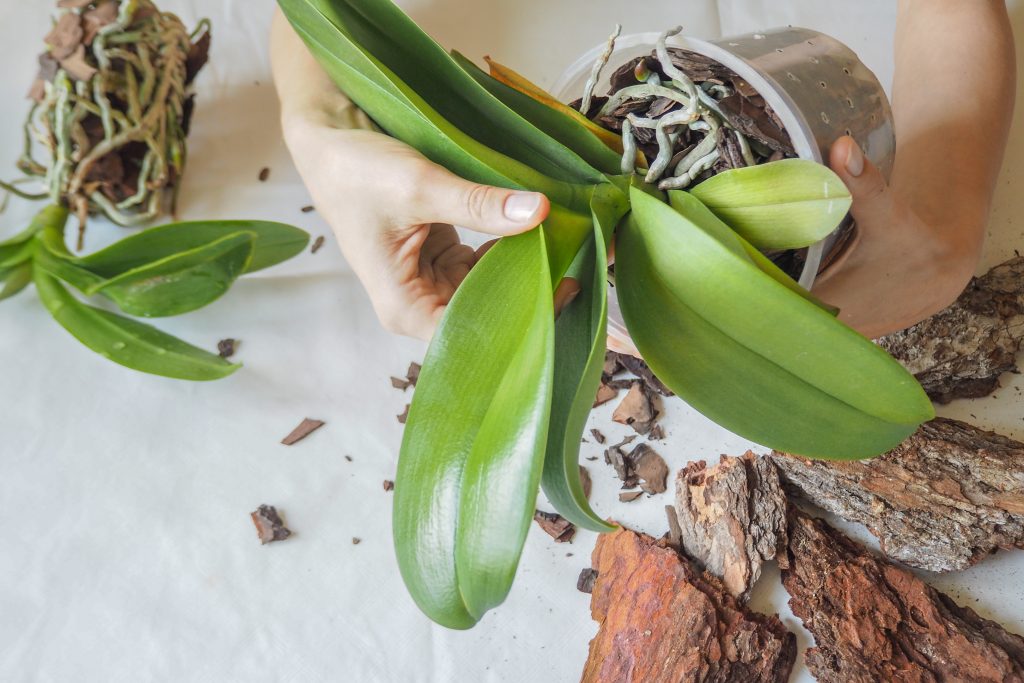Gloxinia is an elegantly flowering indoor plant that is popular among flower growers. It won love with its amazing beauty, which gracefully fits into every interior. This flower conquers everyone with its amazing and unique brightness and sophistication.
Content
Gloxinia. Appearance
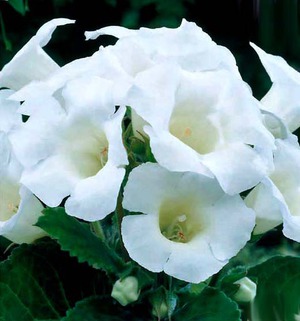 An indoor plant is a perennial plant that has tuberous rhizome... Gloxinia stem is short with large juicy oval-shaped leaves and juicy green color. The flowers are bell-shaped, large enough, arranged on long stalks. Their structure can be double, semi-double and even with wavy petals. The flowers have a different uniform color, as well as with different color transitions. Gloxinia, or, as it is called in another way, synningia, has a fairly large variety of varieties that differ in the size of flowers and their color, in the height of the stem, in the color of the leaves. The most popular varieties of a home flower:
An indoor plant is a perennial plant that has tuberous rhizome... Gloxinia stem is short with large juicy oval-shaped leaves and juicy green color. The flowers are bell-shaped, large enough, arranged on long stalks. Their structure can be double, semi-double and even with wavy petals. The flowers have a different uniform color, as well as with different color transitions. Gloxinia, or, as it is called in another way, synningia, has a fairly large variety of varieties that differ in the size of flowers and their color, in the height of the stem, in the color of the leaves. The most popular varieties of a home flower:
- Gloxinia Avanti differs from other varieties with its large flowers of bright colors, blooming together. The leaves of this synningia are dense and relatively small.
- Gloxinia Hollywood is widely known for its large, uniformly purple flowers.
- Gloxinia Brocada is just the perfect gift for the grower. Sinningia of this variety has a low stem and beautiful double flowers. In order for the plant to delight the grower after its acquisition with its lush flowering, you need to know how to care for gloxinia at home.
How does flower care take place?
Gloxinia. Home care
Like all indoor plants, sinningia has certain care requirements that growers follow.
Lighting and temperature
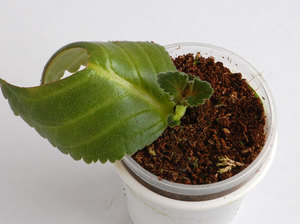 Gloxinia, a photo of which you can admire below, loves space and diffused, but bright light, which should last for at least 14 hours (for this, you can additionally turn on the fluorescent lamp at night). To find out whether our beauty has enough light, you need to pay attention to her leaves: if they are located horizontally, then there is enough, and if they stretch upward (towards the light), then there is a lack of it. But we must remember that the direct rays of the sun falling on a houseplant can destroy it.
Gloxinia, a photo of which you can admire below, loves space and diffused, but bright light, which should last for at least 14 hours (for this, you can additionally turn on the fluorescent lamp at night). To find out whether our beauty has enough light, you need to pay attention to her leaves: if they are located horizontally, then there is enough, and if they stretch upward (towards the light), then there is a lack of it. But we must remember that the direct rays of the sun falling on a houseplant can destroy it.
Gloxinia is afraid of drafts, therefore, when placing a home flower on the windowsill, you cannot open the windows often. Sinningia does not need to be sprayed, because this home flower will not tolerate moisture on the leaves. But at the same time, a houseplant needs high humidity, this can be achieved by leaving a container of water on the windowsill next to the gloxinia pot.
During the growth and flowering period for sinnengia room temperature is needed, only in winter, when the house plant is at rest, it is necessary to provide a temperature of about 10 ° C. If you look at the leaves, you can identify plant problems (if any).Signs with which gloxinia show their temperature preference:
- if the leaves are omitted, then the houseplant is cold;
- if the leaves are raised up, then this is overheating of the home flower.
Therefore, if you find a problem, you need to fix it.
Sinningia blooms in May-June. When this period ends, the stems and leaves of the indoor plant must be removed, leaving only the lower 2 or 4. Then stepchildren will appear in the bosoms of this domestic pet, only a couple of persistent ones should be left, and the rest should be removed.
Watering gloxinia
It is necessary to moisturize the synning with water slightly warmer than room temperature. During the growing season of the plant, watering should be carried out in a saucer or from above, but at the same time, so that drops of water did not fall on the leaves and flowers... Water only when the topsoil is dry. By the end of summer, watering is required less frequently so that by mid-autumn the synningia enters a state of dormancy.
Feeding Gloxinia
The main rule for growing this plant is that an excess of fertilizers will do more harm than a lack of them. Gloxinia is fertilized once every 10 days with a specialized complex.
In preparing a home flower for dormancy, the plant should not be fed. If you do not carry out top dressing at all, then the flowering will be short and shallow, and the colors will take on a pale appearance.
After a dormant period, the houseplant can be fertilized with special mixtures for rapid growth, during the flowering period, synningia fertilized to improve the quality of flowers.
Gloxinia transplant
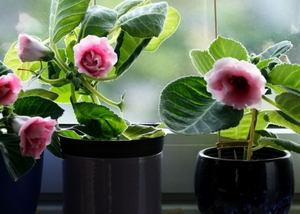 Care should be taken more carefully after a dormant period, usually at the end of winter. An indoor plant must be transplanted once a year. It is better to purchase soil in special stores or prepare it yourself from leafy soil, humus, in a 2: 1 ratio, respectively. When transplanting, you need to take a container for a home flower larger than the previous one, lay drainage there, as well as a layer of soil mixture, and then shift the earth ball with gloxinia, sprinkle with soil, tamp. It is necessary to transplant the synningia carefully so that the tubers are only half in the ground.
Care should be taken more carefully after a dormant period, usually at the end of winter. An indoor plant must be transplanted once a year. It is better to purchase soil in special stores or prepare it yourself from leafy soil, humus, in a 2: 1 ratio, respectively. When transplanting, you need to take a container for a home flower larger than the previous one, lay drainage there, as well as a layer of soil mixture, and then shift the earth ball with gloxinia, sprinkle with soil, tamp. It is necessary to transplant the synningia carefully so that the tubers are only half in the ground.
Gloxinia. Reproduction
An indoor plant can be propagated in various ways, of which there are quite a few. But the choice of method primarily depends on the type of sinningia. Therefore, when purchasing a houseplant, it is necessary to recognize its variety, so that later you can reproduce it qualitatively. Breeding methods for indoor gloxinia:
Seed propagation.
In special stalls you can buy any sort of room gloxinia. It is better to choose seeds in granules for self-planting. The packaging will indicate the timing of their germination, but, as a rule, it is from 4 to 6 months. And if sowing is carried out in winter, then even more - up to 10 months.
For sowing gloxinia seeds, you can use ready-made greenhouses or make them yourself. To do this, you need to take a deep container with a lid, you need to put there and wet peat tablets, distributing granules over them. To ensure ventilation of the seeds, you need to make a couple of holes in the lid. Then put the finished greenhouse in a warm, well-lit room. The temperature of this room should be approximately 23 ° C. Moisten the soil only as needed. After the emergence of seedlings, you need to wait until they get stronger so that they can be planted in a permanent container.
Leaf propagation.
For self-propagation of gloxinia with a leaf, you need to take the smallest leaf and cut it along the thickest veins, cut the petiole, leaving no more than 2 cm. For these manipulations, it is better to take a tool with a sharp blade so that the leaf does not rot. This prepared material should be planted in a container with moist soil, covered with foil until the first leaves appear.
Tuber propagation.
This type of reproduction is quite painful for the plant, so it is extremely rare. A healthy tuber is chosen; if rot is found on the tuber, it must be cut off. Then cut them up and treat them with charcoal for disinfection. Each of the pieces of tubers should have a shoot. Then these tubers are planted in a container with moist soil.
Reproduction by peduncles.
After completing the flowering period, the plant must be cut off the peduncle and placed in a container with water for the appearance of roots. Then plant it in moist soil too and cover with foil.
Reproduction by stepsons.
Place the shoot in water for roots to emerge, then plant in the ground.
Propagation by cuttings
This is the most elementary and fairly popular breeding method for home synningia. During the period of bud formation, you need to take a leaf cutting, about 4 cm no more. If the leaf is withered, then to restore it, it must be dipped into water, then put into boiled water with a temperature of up to 25 ° C. Then, as in the previous methods, place it in loose, moist soil. After a month, the appearance of a tuber is already possible.
Problems in growing synningia
After considering home care for gloxinia, reproduction, it must be remembered that, like any houseplant, it can kill various diseases.
Synningia diseases and pests
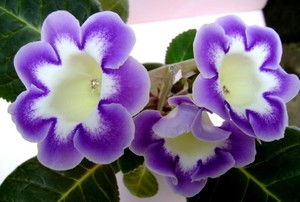 Gray rot is the most famous disease that occurs on synningia due to inadequate care. Signs of its appearance are spots of brown color on the leaves of a houseplant. During treatment, it is necessary to remove the damaged fragments of the leaf and treat it with a fungicide.
Gray rot is the most famous disease that occurs on synningia due to inadequate care. Signs of its appearance are spots of brown color on the leaves of a houseplant. During treatment, it is necessary to remove the damaged fragments of the leaf and treat it with a fungicide.
Root rot... It is also quite common on indoor sinning. Symptoms of this disease appear on the roots of a house flower, they turn brown and the stem can rot at its base. The reason for the appearance on gloxinia is excessive watering or the water that moistened the soil was cold enough.
Powdery mildew, black leg, late blight - these diseases are also detrimental to synningia. To do this, as a prophylaxis for a houseplant, phytosporin should be treated with drugs. If the disease has already manifested itself, then the home flower should be treated with a drug - foundationol.
Cyclamen pliers... Unfortunately, these mites are difficult to detect on gloxinia. But, if there is deformation and thickening of the leaves turned down, dried tops of the shoots, wilted buds, then these are all clear signs of their presence on a houseplant.
Thrips. They can be found on gloxinia by light dots, spots that have appeared on its leaves. If not removed, they will dry out. In order not to destroy the houseplant, it is necessary to transplant, replacing the soil and treating the home flower with insecticides.
To avoid damage or death of gloxinia as a result of damage by pests or diseases, it is necessary to carefully examine the flower for damage and promptly recognize the cause of their appearance.
Problems with growing gloxinia and their solution
The following phenomena also happen:
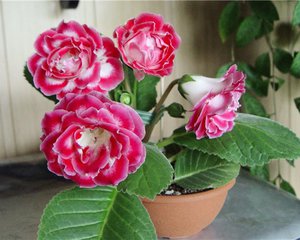 If the leaves turn yellow and fall off, then too frequent watering or a lack of nitrogen is possible.
If the leaves turn yellow and fall off, then too frequent watering or a lack of nitrogen is possible.- If the leaves curl up, there is a lack of humidity in the room. This problem can be solved by placing a container of water next to the house plant.
- If the leaves curl up and small pedicels form and the flowers hide under the leaves, then the room humidity is very high.
- When deep notches appear on the edge of the leaves, you need to fertilize with 2% boric solution.
- If during the growing season the leaves begin to darken and become lethargic, it means that the tuberous rhizome begins to rot from excessively abundant watering.
- If the leaves of the plant begin to wither in the fall, this is just preparation for the dormant period, you should not worry about this.
- If gloxinia does not bloom, then the reason for this may be a lack of light, low room temperature, and an excess of nitrogen.
Sinningia can be safely called a rather unpretentious home flower. Caring for gloxinia at home is quite simple, but there are some features that growers need to observe. And with due attention, flowering gloxinia will scent on the windowsill of any living space.
